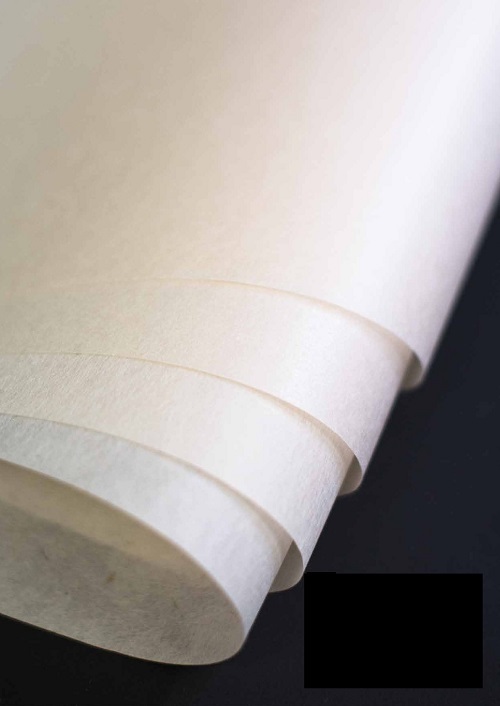Most of the washi paper that you can see and buy in Mino is branded as Mino Tesuki-washi. Like Hon-minoshi, Mino Tesuki-washi must meet strict requirements to carry the Mino name. The basic processes for both Hon-minoshi and Mino Tesuki-washi are the same. However, while Hon-minoshi uses only the inner bark fibers of the kozo (paper mulberry) plant grown in Daigo, Ibaraki Prefecture, Mino Tesuki-washi can also be made with mitsumata (Edgeworthia chrysantha) and gampi (several shrubs of the genus Wikstroemia).
Drying by machine
Another key difference is that Mino Tesuki-washi can be dried by machine, while Hon-minoshi is always dried in the sun. This makes it easier for washi makers to produce paper year-round. Visitors to the Mino Washi Paper Museum in Mino can try their hand at making several types of handmade washi.
Types of Mino Tesuki-washi
There are three common types of Mino Tesuki-washi: water-patterned rakusuishi, non-bleached kigami, and coarse unryushi. Water sprinkled on sheets of washi before drying creates patterned paper called rakusuishi. To make kigami, the inner bark fibers are not bleached by the sun and water, resulting in a warmer color. When the bark fibers are less refined, they create attractive patterns, producing washi known as unryushi. These papers are commonly used to make lanterns and fans, and some writing paper.

